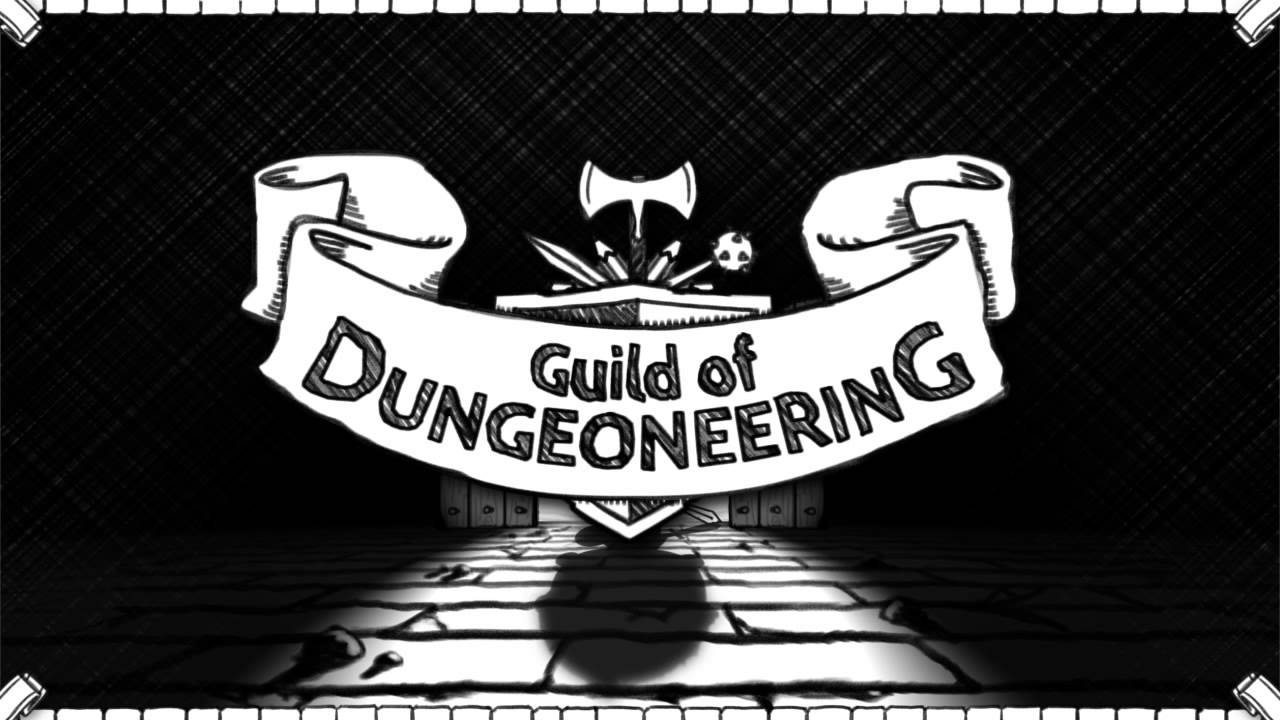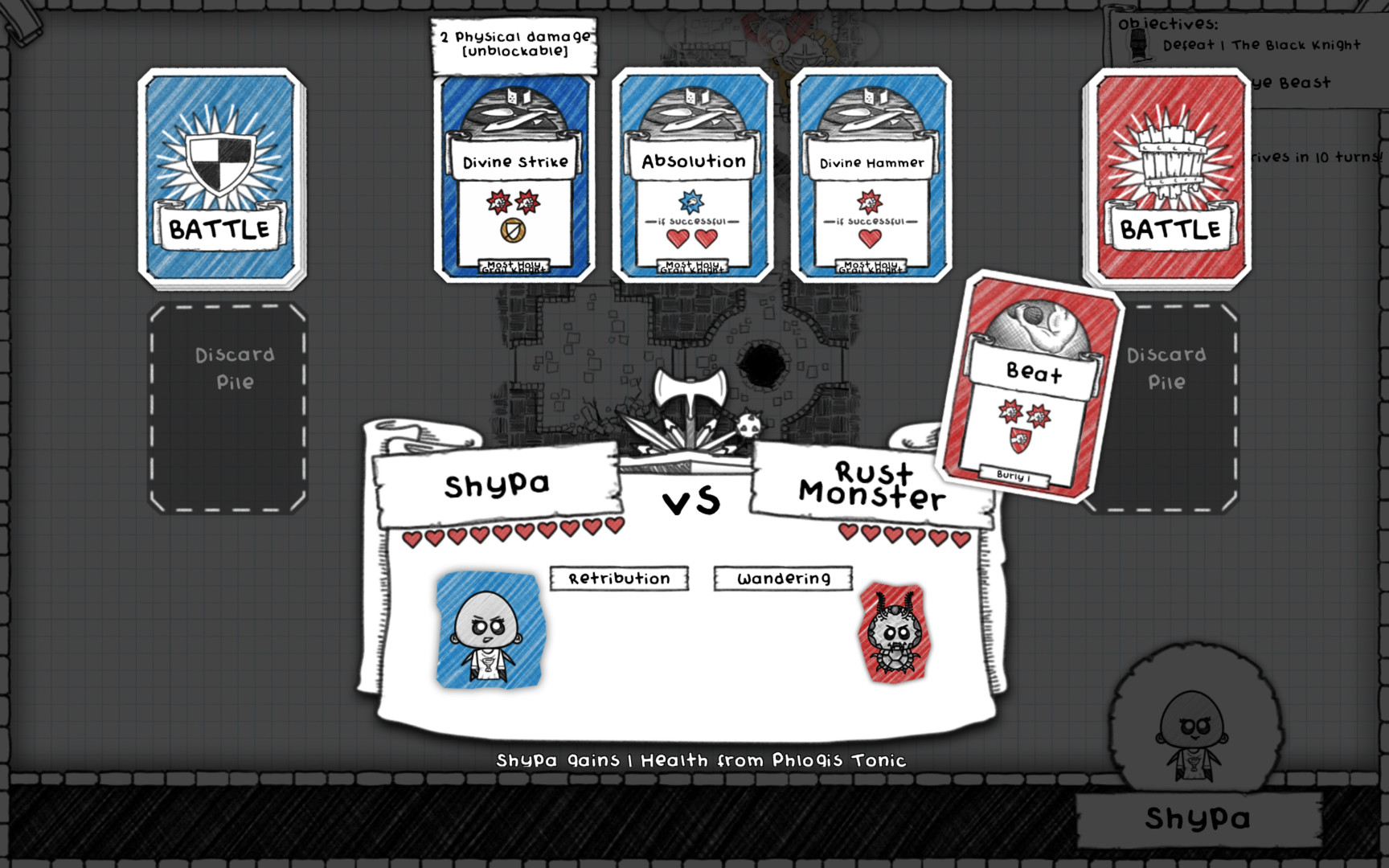Ambition is becoming a major factor in game development. Between games having very ambitious objectives, such as topping a hundred hours of gameplay, or the developers themselves, promising countless features and raising a game’s hype to the stars, the industry revolves around this concept. This is also true for indie games, who have to almost strive even more for their game to keep its promises, so as to break through the scene and make a name for itself, gaining popularity for both the game and the studio behind it.
Guild of Dungeoneering, developed by new studio Gambrinous, embodies the perfect amount of in-game ambition. It wants to have you playing the game for quite large periods of time at once. And it manages to do it thanks to its amazing presentation and gameplay which will challenge even people with practically attention deficit to not stick around.
Having played the game previously, with a preview article which you can check out here (URL to my Guild of Dungeoneering Preview please!) I was pretty familiar with the game, but the full release still managed to blow me away with all the little features which were added between the preview phase and the full game. For starters, the preview build lacked any intro or story to get you into the game, while the full version now starts beautifully by showing briefly the guild leader’s intent and aims, and the reason why this guild exists in the first place. The humour of the game is also very good, since it never overdoes anything yet still managing to be funny at all times. It is incredible that all the characters seem to have a personality of their own, because we are not talking about the same four or five mains but almost an infinite number of characters, since once gone another will be spawned in his place.
Going over the gameplay, Guild of Dungeoneering is essentially a dungeon crawler, but with the game breaking difference that it is the player himself constructing the dungeon, to then proceed to beat the same dungeon that the player built. It is much more complex on paper trust me, because once you fire up the game, it becomes pretty much crystal clear what needs to be done. Put simply, the player is dealt five cards from which to use a maximum of three. These cards can add pathways or rooms to the dungeon, or also spawn enemies or rewards in a desired location. Since you have no direct control over your minion, the character who is fighting in the dungeon, you need to make sure that he goes wherever you want him to go, thus putting enemies or gold coins along a certain path will bait him into going where you wish to see him go.
Upon walking upon an enemy monster, battle will commence. Battle also involves cards, but is much more strategic than the building part. You are dealt three cards, of which one must be used to do an action. The options available are blocking physical attacks, blocking magic, attacking physically or magically, but they may also bring special effects triggered upon successfully landing a hit on your enemy, for example a card may have an effect that if you hit your opponent, you can draw an extra card from the deck. Other effects, such as unblockable attacks or restoring HP if attack hits are also present, and offer players more choice and strategic options.
Another element which will definitely increase the thinking process when venturing through the game is equipment. Each character can have four pieces of gear, namely head torso legs and weapon. These parts are obtained from defeating enemies or levelling up, which bring up three rewards from which to choose one. Luckily, hovering upon each reward will show the item effect and will also highlight whether you already possess that card or have it equipped, so as to prevent stocking identical items. Items equipped may also possess special abilities which unlike cards are always present in battle. For example a special ability one of my characters possessed, before his untimely and unfortunate passing, is the Spikey trait, which permitted the character to inflict 1 damage if the opponent’s whole attack was successfully blocked. Another ability is the Tenacious perk, which means that you cannot die unless you are first brought to 1HP and then finished in the next turn. This may prove a vital skill, since it breaks up opponent attacks especially later on in the game where enemies all begin using 2+ damage attacks.
Guild of Dungeoneering surely has a lot to offer, and this was evident already from the preview build of the game, which was awesome by itself. The inclusion of a lore and storyline have taken it to the next level, and I sincerely hope for the success of this game, which is totally deserved. For a title to be as charming and engaging as this, while still retaining all the ingredients for a contender of indie game of the year, is truly an impressive feat.
Disclaimer:All scores given within our reviews are based on the artist’s personal opinion; this should in no way impede your decision to purchase the game.














You must be logged in to post a comment.